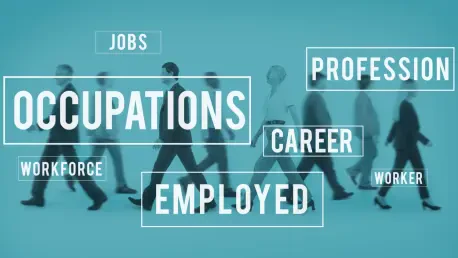In a labor market increasingly defined by caution, a striking trend has emerged where American workers are choosing stability over exploration, opting to remain in their current positions for at least the next six months. This shift, driven by a noticeable decline in confidence about job opportunities, reflects broader anxieties about economic conditions and technological disruptions like automation and artificial intelligence (AI). Reports from industry experts reveal a workforce grappling with uncertainties, leading to a softening job market where optimism has reached its lowest point in recent memory. This growing reluctance to seek new roles is not just a fleeting reaction but a significant indicator of deeper systemic challenges. As employees prioritize security, employers face a complex landscape of talent retention and attraction, prompting a reevaluation of strategies to maintain workforce stability. This phenomenon sets the stage for a closer examination of the forces shaping today’s employment decisions and their implications for both workers and organizations.
Navigating a Cooling Job Market
Worker Confidence Hits Record Low
A sharp decline in worker optimism about job market prospects has become a defining characteristic of the current employment landscape, marking the steepest drop observed in several years. According to recent data from Eagle Hill Consulting’s Employee Retention Index, which edged up slightly by 0.4 points to 102.9 in the latest quarter, this downturn represents a historic low, with consecutive declines recorded for the first time since the index began. This pervasive pessimism spans nearly all demographics, with baby boomers and men experiencing the most pronounced drops in confidence. Economic uncertainties, coupled with fears of job displacement due to emerging technologies, have fueled a cautious mindset among employees. Many are now hesitant to explore external opportunities, preferring the familiarity of their current roles despite underlying concerns about future stability. This trend underscores a broader shift toward risk aversion, as workers weigh the potential pitfalls of job transitions against the perceived safety of staying put.
Economic and Technological Pressures
Beyond diminished confidence, the labor market is under strain from external forces that amplify employee reluctance to switch roles. Economic forecasts remain uncertain, with fluctuating indicators creating a sense of instability that discourages risk-taking among the workforce. At the same time, the rapid integration of automation and AI into various industries has introduced new fears about job obsolescence, particularly in sectors vulnerable to technological disruption. These twin pressures have softened the job market, as evidenced by fewer candidates receiving multiple offers or retracting acceptances, according to a recent Gartner report. For employees, the specter of redundancy looms large, reinforcing the decision to remain in familiar positions even if satisfaction levels are not optimal. This dynamic reveals a labor environment where external threats, rather than internal dissatisfaction, are increasingly dictating career choices, pushing workers toward a defensive stance in their professional lives.
Strategic Responses to Retention Trends
Generational Shifts in Workforce Dynamics
Examining generational differences offers critical insight into retention patterns, with Generation Z emerging as a unique focal point in the current climate. Data from Eagle Hill Consulting indicates that Gen Z employees are the least likely to leave their jobs in the coming months, displaying a stronger belief in their organization’s future and higher satisfaction with compensation compared to other age groups. This stability, noted for the second consecutive quarter, suggests a preference for security amid widespread uncertainty. However, this trend comes with a significant caveat: engagement levels among Gen Z workers have declined more sharply than among other demographics. Indicators such as workplace culture sentiment have shown a marked drop, hinting at a disconnect that could undermine long-term retention. This duality highlights the need for employers to address not just retention but also the quality of connection younger workers feel with their roles and organizational values.
Opportunities for Internal Growth
Amid the reluctance to seek external opportunities, a strategic window has opened for organizations to enhance retention through internal initiatives. Industry leaders suggest that while employees are less inclined to leave, they remain open to new roles or responsibilities within their current companies. This presents a chance to focus on internal mobility, offering career advancement pathways that can reinvigorate workforce morale. Additionally, investment in training and skill development can address concerns about technological displacement by equipping employees with relevant competencies for an evolving job landscape. Such measures not only bolster retention but also help mitigate the challenges of attracting external talent in a selective market. By capitalizing on this period of lower turnover, companies can build a more resilient workforce, addressing underlying dissatisfaction and aligning employee growth with organizational goals. This proactive approach turns a cautious labor market into an opportunity for meaningful internal transformation.









